Sharpsville Schoolhouse


his past weekend, the girlfriend came for a visit in Kentucky. There were no special plans or activities planned; just some much needed time spent together. On Saturday afternoon, I decided to take welfy with me to check out an abandoned building that's been on my short-list of places to explore for a while. It's in Washington County, just a few miles from my home and a just bit further from the Tatham Springs Hotel which I explored back in the spring.
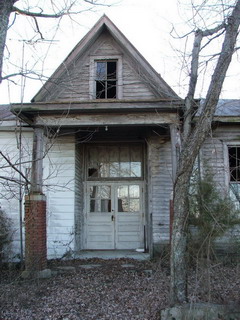
In the small community of Sharpsville there's a fork in the road where Highways 53 and 390 meet in the northern part of the county. In the peninsula of land created by this fork sits the old Sharpsville Schoolhouse. Like the old hotel, it's been there as long as I can remember, completely abandoned. When I was a kid, the general store across the street was still open, but it has long since been closed. All that remains of this community are the brick ranch and wooden gabled farm houses which line the highway and dot the landscape.
The original schoolhouse appears to have been built at the turn of the 20th century. Typical for the era, it is a simple wood frame building resting on a stone foundation, adorned with symmetrical 8-foot windows. The original structure's entrance was at the end of the building, creating a foyer which ran the depth of the building with double-doors at either end and providing access to the four schoolrooms on the interior. The exterior features a tin roof, wood slat siding, and twin brick chimneys, one on either side of the central foyer. The entrance was topped with a faux second-story with a window above the doorway and a small porch covering supported by brick columns. Garnishing the front of the structure was a low cement wall, a curious architectural quirk of the region which is seen on everything from churches to homes. My own childhood home has one of these low walls.
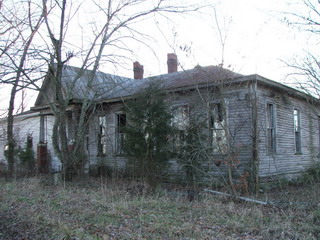
Some time later, I'm guessing in the 1940's or 1950's, some remodelling was performed on the left half of the structure, resulting in much smaller windows, aluminum siding, and an additional front entrance to the building. It's unclear whether these additions were made while the structure still served as a school or later as as a residential building, of which there was ample evidence as we'll soon see. So let's dispense with all the wordiness and small pictures and take a look around, shall we?.
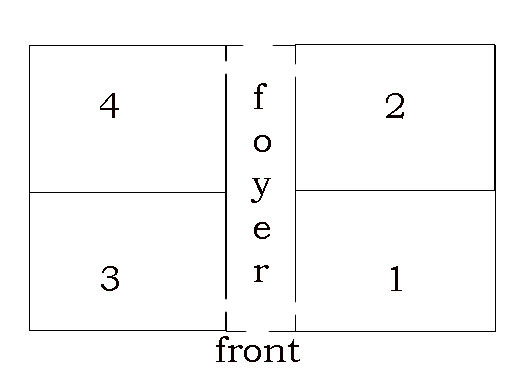

find that providing a simple little floor plan helps in getting a feel for the layout of a building. This diagram is laughably not to-scale, but gives you a rough idea of how the building is constructed. It's a very simple design, with 2 rooms on either side seperated by a foyer.
As mentioned previously, the main foyer of the extends the entire depth of the building, providing access to the original schoolrooms on either side of the hallway. Like the front, it has double-doors exiting the rear of the building.
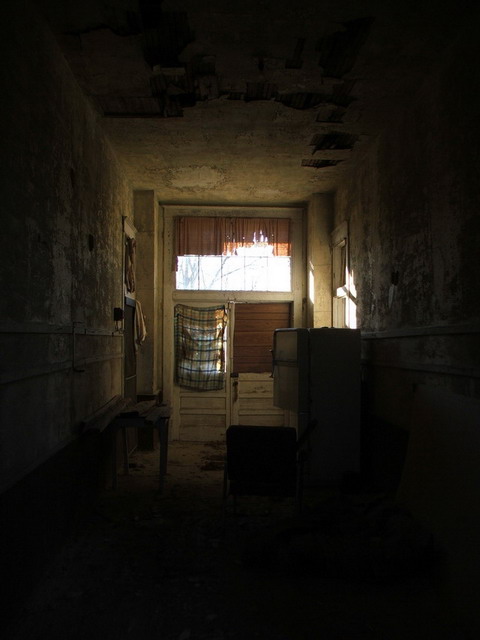
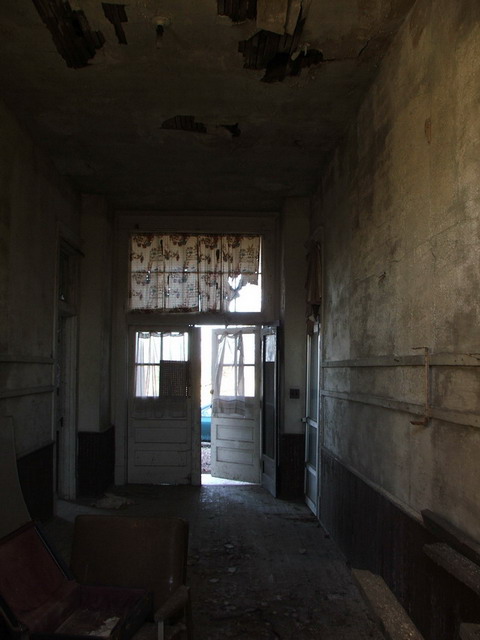
From the rear of the foyer looking back, we can see the front doors with the other two access doors on either side of the hallway.
Like most foyers and alcoves which serve entries to rural buildings, there is a simple strip of wood here with nails for hanging coats.
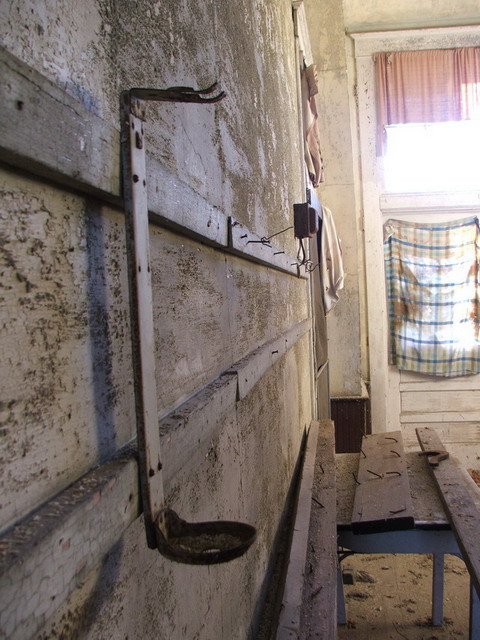
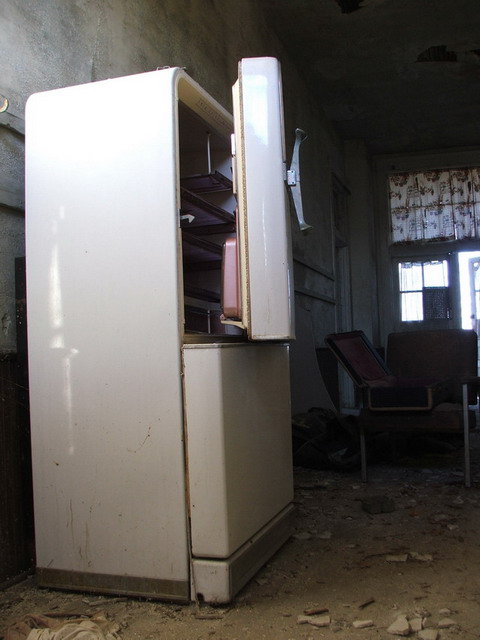
But probably the most prominent feature of the foyer is the old refrigerator residing here inexplicably.
Schoolroom number one, the one nearest the entrance and on the right, was largely empty. There were signs that it had once been used for general storage: old televisions, truck tires, scraps of lumber - even an old high chair and ironing board. I found it interesting that the light bulb was still intact; something you rarely see in abandoned buildings. In fact, throughout the building, which you'll notice in other photos, a good deal of the light fixtures were still in place and unbroken.
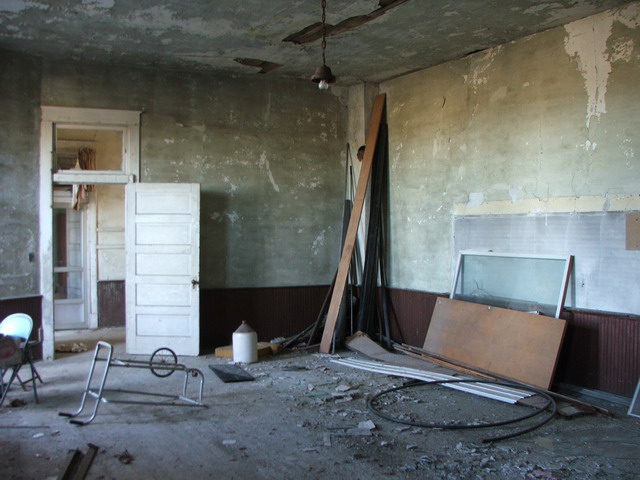
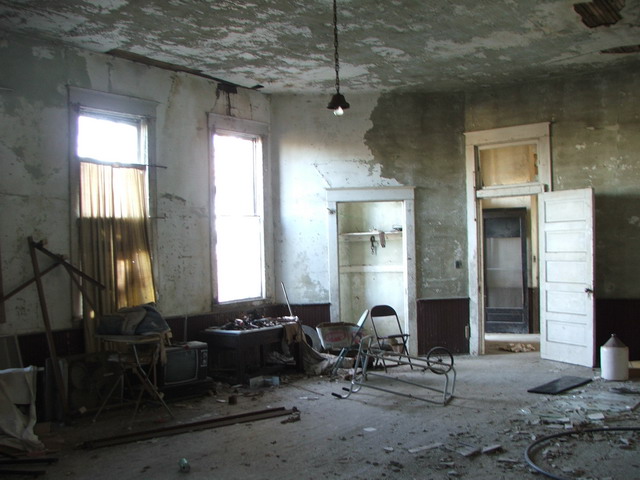
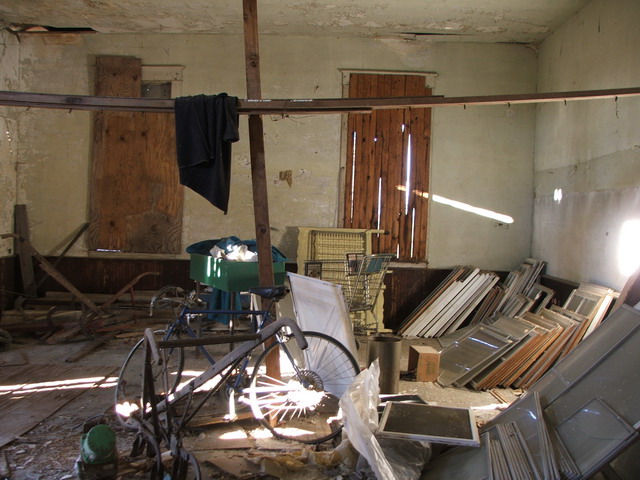
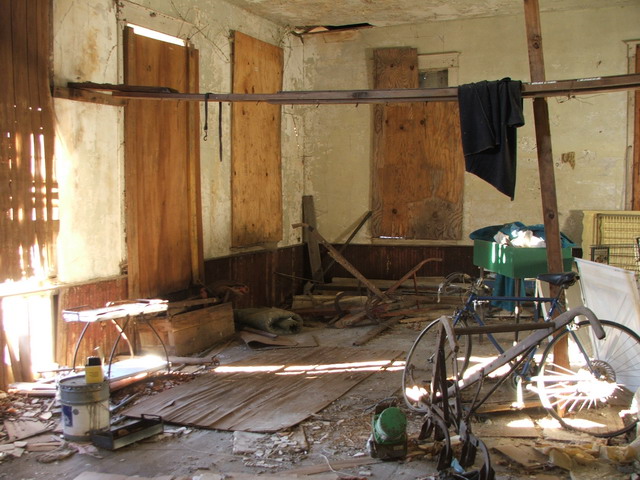
Schoolroom number two, however, was not so empty There were old storm windows and screens, bicycles, horse-drawn plows, clothing, a shopping cart... ...another old television and a small treasure-trove of returnable soda bottles....
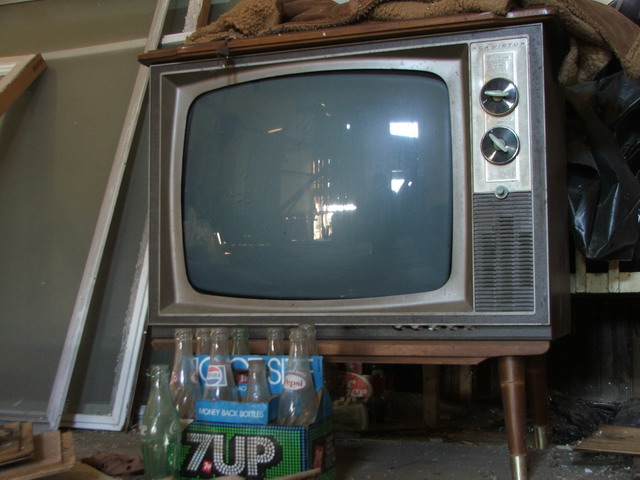
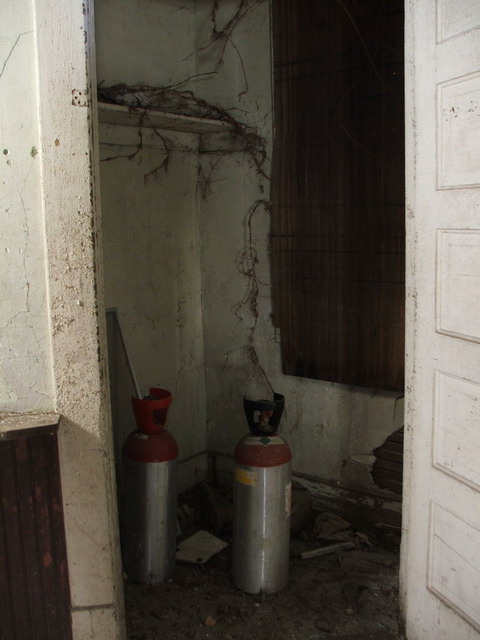
...and probably most strangely, some discarded CO2 cannisters.
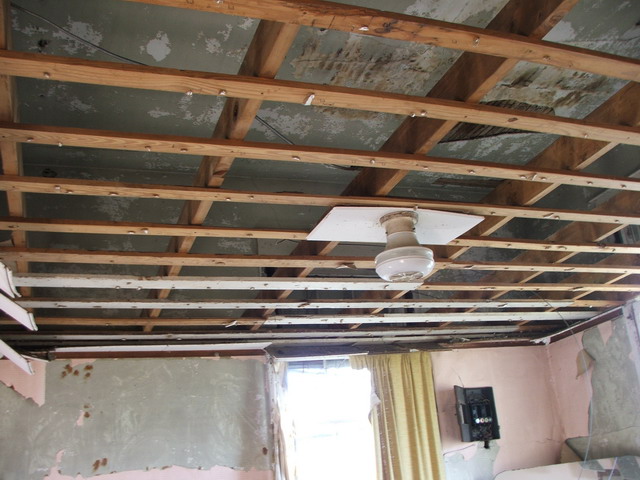

n the other side of the foyer, the rooms were drastically changed during the remodelling of this side of the structure. It appears that a previous owner of the property got the idea to convert half of the schoolbuilding into a house while keeping the other side for storage. The entire left side of the building had been subdivided, both horizontally and vertically. Walls had been built inside the two large rooms, creating a kitchen, a liviing room, a bathroom, and two bedrooms. Doorways had been cut between the two original rooms in two places, creating a small circuit through this side of the building. A drop-down ceiling had been installed throughout, however by now, most of the tiles had fallen to the floor. If you look closely at the window in the background in the photo to the right, you'll notice that the ceiling covers the top 1/3 of the window.
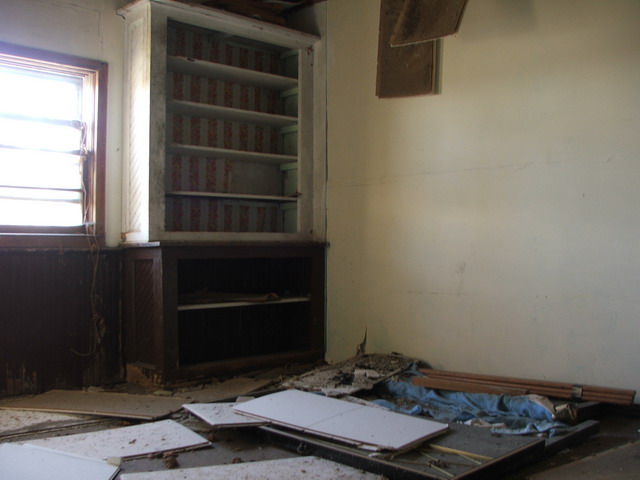
This became a constant theme throughout this side of the building, how to incorporate the existing 8-foot windows into the much lower ceiling plan. In the case above, they merely placed the aluminum siding over the top portion of the window and created a fake top frame for the exterior of the window. But on the inside, the drop-ceiling just covered it. On other cases, they created smaller windows within the existing window and plastered in the rest. If you look at the photo to the left, you'll notice the cracking around the top of the window where the plaster is seperating from the wood frame of the original window. For this window, they didn't even bother covering the lower section of the old window, they just laid the siding over it from the outside.
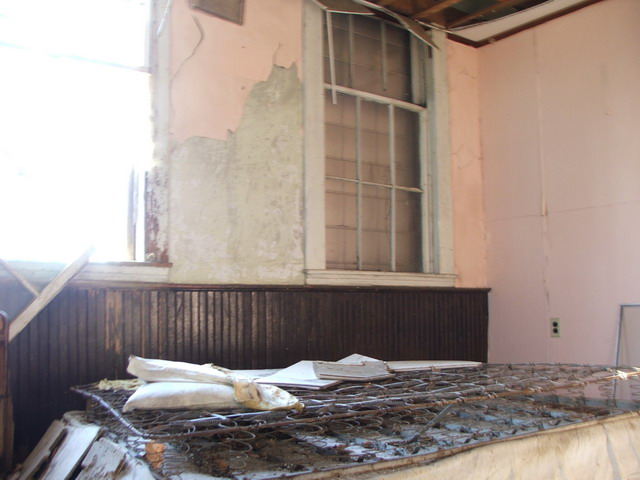
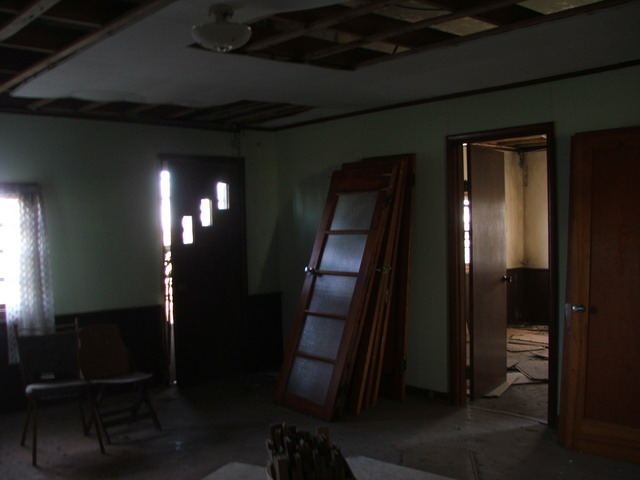
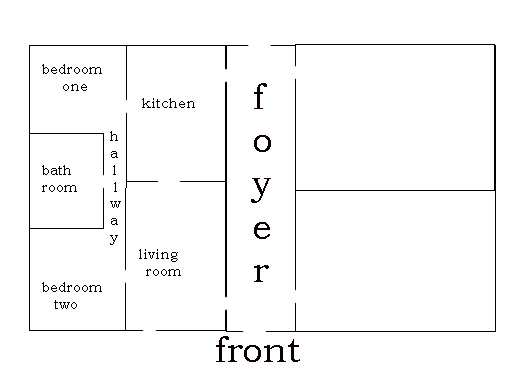
In the living room, they turned one of the windows into an additional entrance by chopping-out the wall below and setting a door frame into it. But enough about old windows! Since we're here in the living room, let's continue our tour on this side of the schoolhouse here. To assist with visualizing the layout, we'll return to the diagram. The living room is nearest to the schoolhouse's original entrance with the kitchen toward the rear connected via an interior doorway cut in the existing wall. A new wall has been erected dividing the two old schoolrooms in half and a portion of the original wall was removed. Additionally, an interior room has been built in this outside half creating a bathroom and a hallway connecting two bedrooms. Easily discerned in the previous photo of the living room, it for some reason began collecting doors along one of its walls. There're some other fun things in the living room though. For instance, there's the closet. If the geriatric walker in the doorway isn't enough to catch your eye, the clothing still on its hangers probably will. Upon closer inspection, we find there are some things on the shelves, namely a lamp...
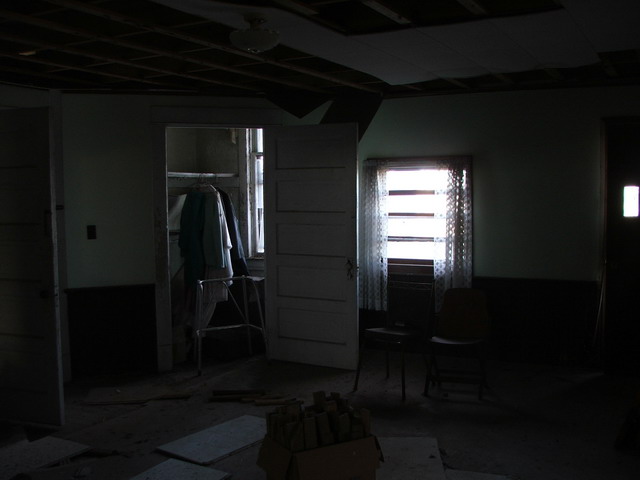
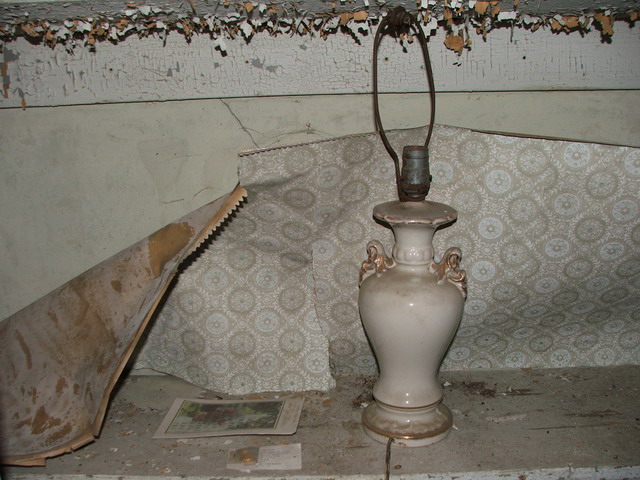
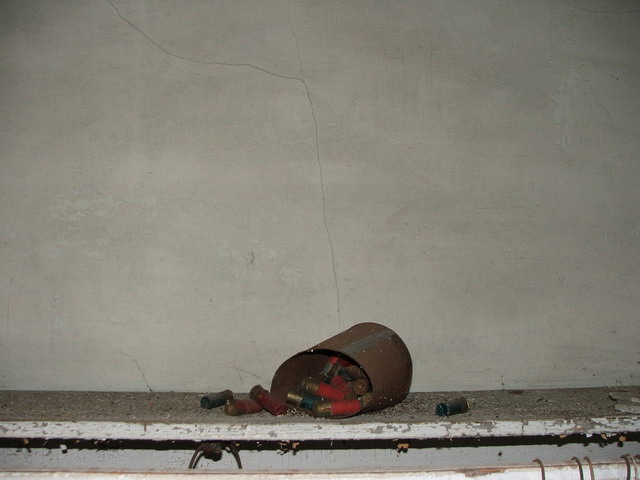
...as well as a rusted coffee can filled with shotgun shells. Across the room, next to the door leading to the bedroom, two small photos still hung on the wall.
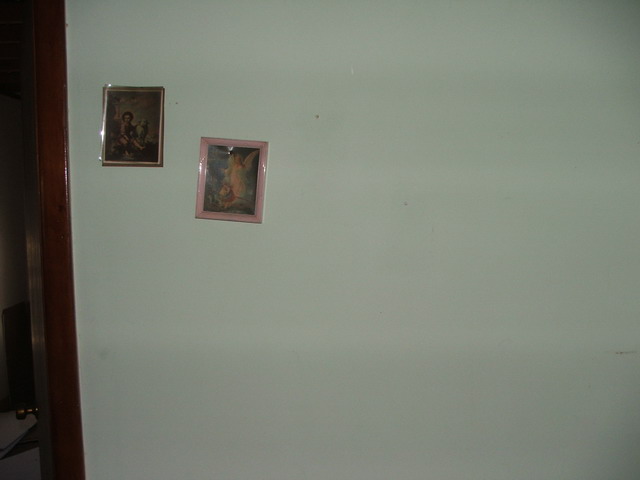
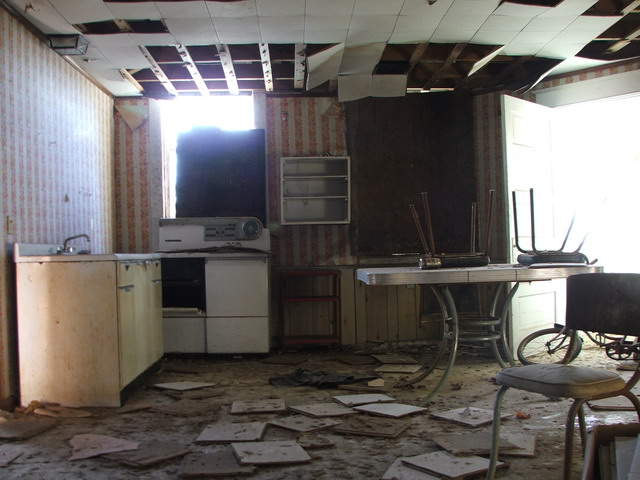
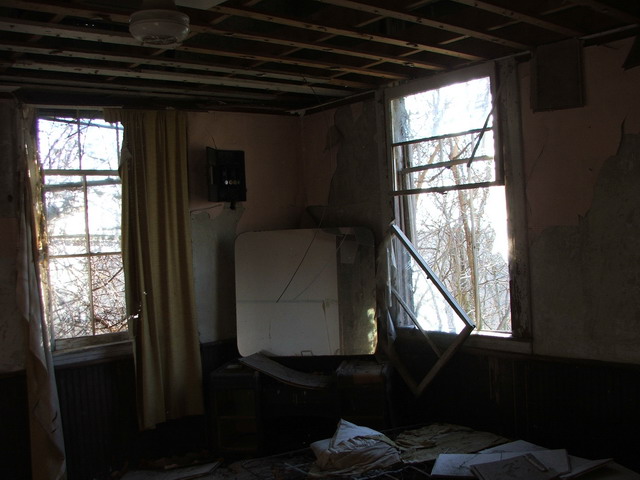
The house was full of the vestiges of habitation. The kitchen still had a table and chairs, along with the stove and sink.
In the bedroom off the kitchen, were the remains of a bed and a dresser with its dusty mirror still completely intact. The other bedroom off the living room didn't have much in it except for a bookshelf, seen earlier in the photo with the aluminum siding covering the window. The bathroom however, was in really good shape. All of the fixtures and plumbing were intact, including the mirror in the medicine cabinet, a small wall shelf, and the light fixture above the sink.
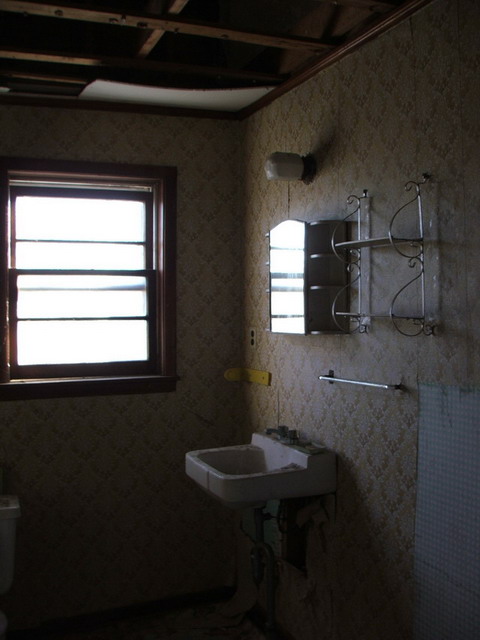

The toilet, with its lovely pink seat sat nearby, a used toilet-paper roll still hanging on the wall beside it. The bathtub was still here, too.....
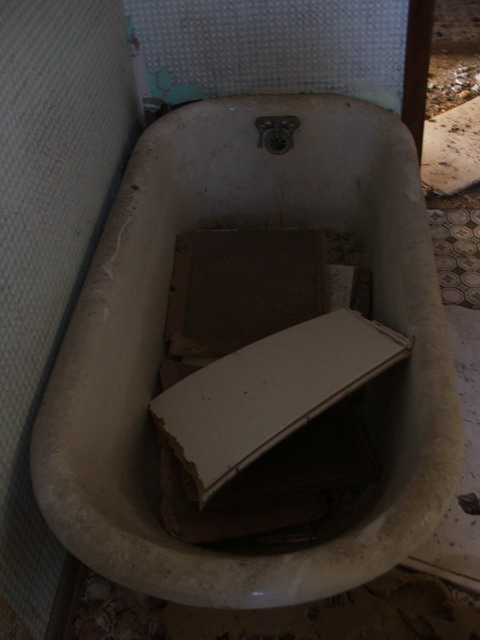
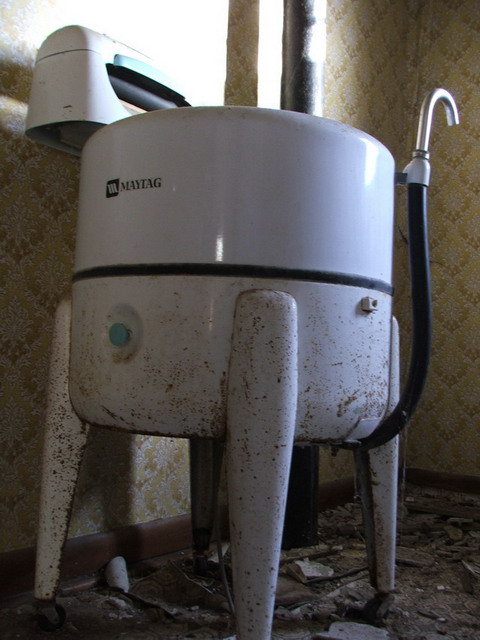
...as was an old, ringer-style Maytag washing machine.

took nearly a hundred photos at the Sharpsville Schoolhouse on Saturday. Feel free to check them all out in my photo album.